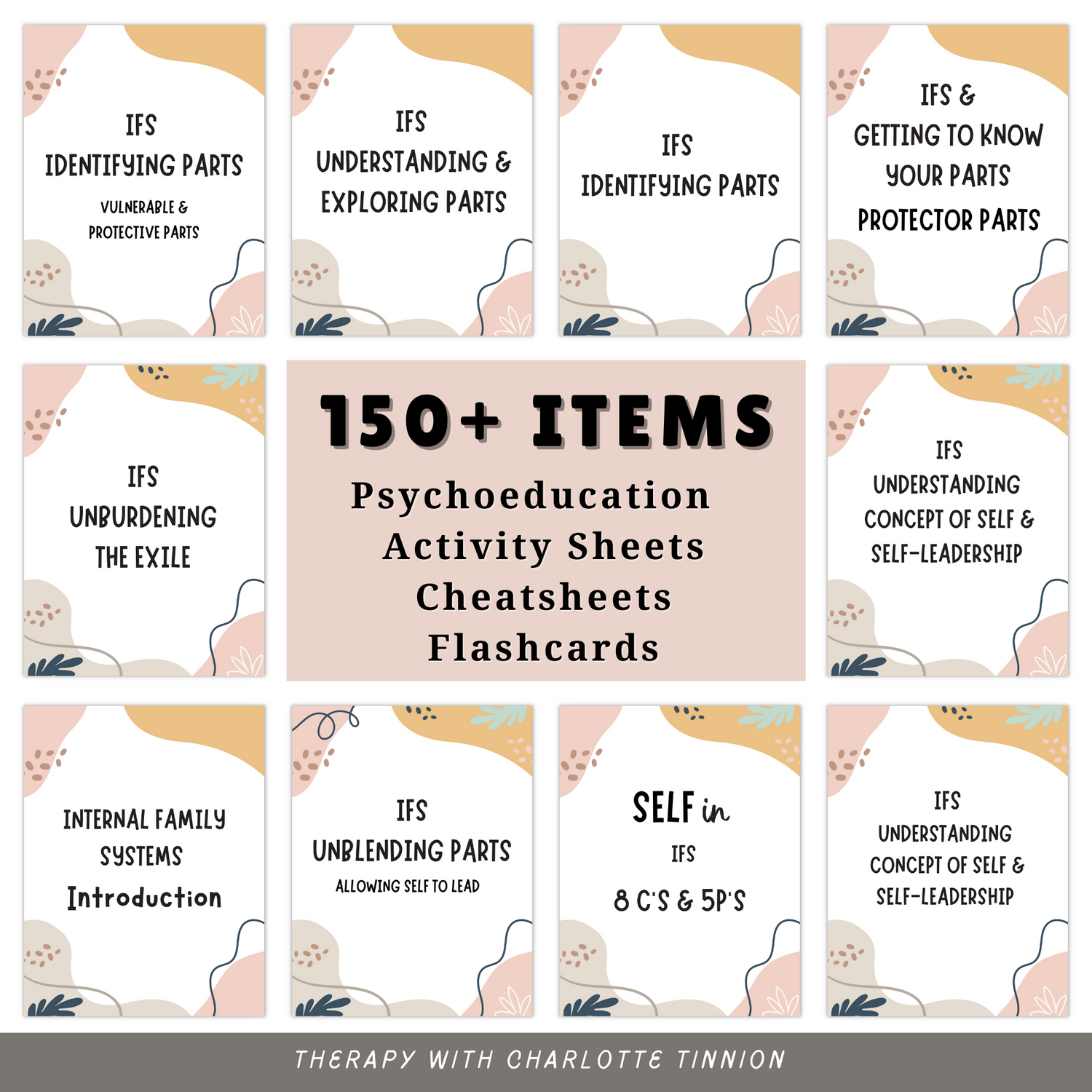
Our Somatic Therapy Essentials
Somatic Therapy Essentials: Exploring Felt Senses for Emotional Healing
Have you ever felt like your body was trying to tell you something? Maybe you've noticed tightness in your chest when you're anxious or a knot in your stomach when stressed.
These physical sensations are more than just bodily reactions; they're part of what somatic therapists call the "language of sensations."
For individuals with Post-Traumatic Stress Disorder (PTSD), understanding this language can be a vital step toward healing.
PTSD can affect every aspect of a person’s life, from relationships to daily routines. Somatic therapy offers a unique approach to healing by focusing on the connection between the body and mind.
In this blog post, we’ll explore how somatic therapy helps with PTSD by identifying your ‘felt senses’ and include practical exercises you can try at home.

The Language of Sensations
Think of the last time you experienced a wave of emotion. Maybe it was joy, like reuniting with a loved one, or fear, like narrowly avoiding an accident. In those moments, your body likely sent you signals—tightness in your chest, a lump in your throat, or a pit in your stomach.
These physical sensations are your body's way of communicating. Somatic therapists call this the “language of sensations.” Understanding this language is key to unlocking the emotional experiences stored in your body, especially for those with PTSD.
What is Somatic Therapy?
Imagine walking through a serene garden, surrounded by colourful flowers and chirping birds. As you take in the surroundings, you start feeling calm and grounded. This experience of feeling present and connected through your senses is at the core of somatic therapy.
Somatic therapy is a holistic healing approach that emphasizes the mind-body connection. Unlike traditional talk therapy, which relies heavily on verbal communication, somatic therapy incorporates bodily sensations and movements. By paying attention to these experiences, individuals can better understand their emotions and develop healthier coping mechanisms.
For those with PTSD, somatic therapy provides a safe way to process trauma by addressing both the mind and body, where trauma is often stored.
Somatic Therapy Exercises

Here are some simple somatic exercises to help you become more aware of your body and its sensations, offering relief from emotional distress:
Grounding Exercise
- Find a quiet space, sit comfortably, and close your eyes.
- Take slow, deep breaths and focus on the physical sensations in your body—like the weight of your body against the chair or your feet touching the floor.
- This exercise can help you feel grounded and present in your body.
Body Scanning
- Lie down comfortably and close your eyes.
- Starting from your toes, scan your body for any tension or discomfort.
- As you find areas of tension, consciously release them and breathe deeply into those areas.
Identifying Felt Senses
- Sit quietly in a comfortable position.
- Take deep breaths, close your eyes, and scan your body for subtle sensations like warmth, tightness, or heaviness.
- Pay attention to these sensations, label them and spend a few minutes reflecting on what your body might be communicating.
Identifying Your ‘Felt Senses’
Have you ever had a gut feeling about something? Maybe you felt trust or unease upon meeting someone new. This is an example of a ‘felt sense.’
In somatic therapy, ‘felt senses’ refer to the subtle bodily sensations that carry meaning and significance. These can include feelings like tightness, lightness, or heaviness in specific areas of your body. These sensations often give clues about your emotions and experiences, especially for those with PTSD.
Identifying your ‘felt senses’ is key in somatic therapy. By tuning into these sensations, you gain greater awareness of how your body responds to different situations and triggers, empowering you to manage your emotional responses more effectively.

5 Reflective Questions to Connect with Your Felt Senses
Reflective questions are a powerful way to explore your ‘felt senses’ and gain insight into how your body processes trauma:
What sensations do you notice in your body when you think about a traumatic event?
- Identifying the physical sensations associated with trauma, such as tightness or a pit in your stomach, can help you understand how your body stores these experiences.
How do these sensations change over time or in different situations?
- Observing changes in your ‘felt senses’ helps you understand how your body responds to different triggers.
Are there specific triggers that consistently elicit strong ‘felt senses’?
- Identifying triggers helps you anticipate emotional responses and develop coping strategies.
What coping strategies have you used to manage these sensations in the past?
- Reflecting on what has worked for you can help refine your emotional regulation techniques.
How can you use your ‘felt senses’ as a guide for self-care and emotional regulation?
- Listening to your body’s signals can guide you toward healthier choices and better stress management.
Worksheets
To help you explore your ‘felt senses’ in a structured way, you can use our worksheets. These worksheets provide prompts and questions to guide your reflection, making it easier to track patterns and gain deeper insights into your emotional experiences.
Using these worksheets regularly can help you:
- Increase Self-Awareness: By tracking your ‘felt senses,’ you’ll develop a deeper understanding of how your body responds to stress and trauma.
- Enhance Emotional Regulation: As you become more attuned to your body’s signals, you’ll learn to regulate your emotions more effectively.
- Improve Communication: Articulating your ‘felt senses’ can make your therapy sessions more productive by helping you express your emotions clearly.
- Empower Yourself: These worksheets give you an active role in your healing journey, complementing traditional therapy approaches.
Somatic therapy offers a powerful way to heal by recognizing the deep connection between your mind and body. By tuning into your ‘felt senses,’ you gain valuable insight into your emotional experiences, leading to improved emotional regulation and overall well-being.
Ready to explore your body’s inner signals? Our worksheets can help guide you on this path. They provide a practical tool for self-reflection and help you make more informed decisions about your mental and emotional health.

